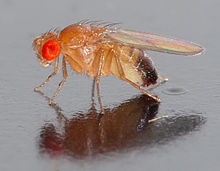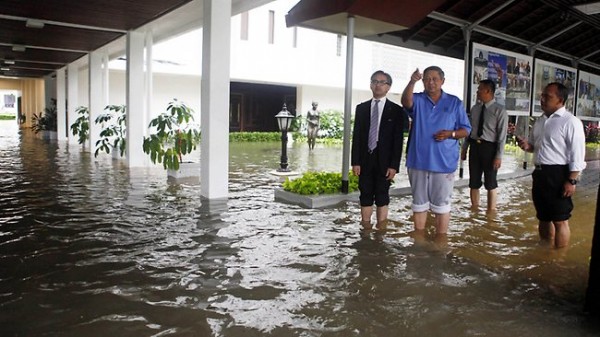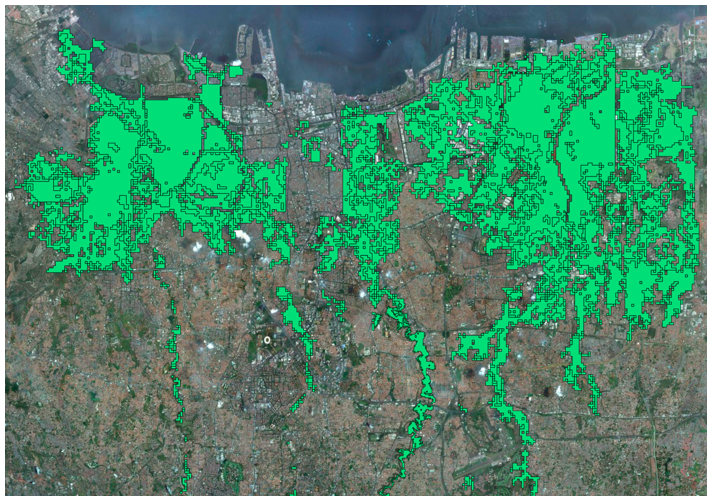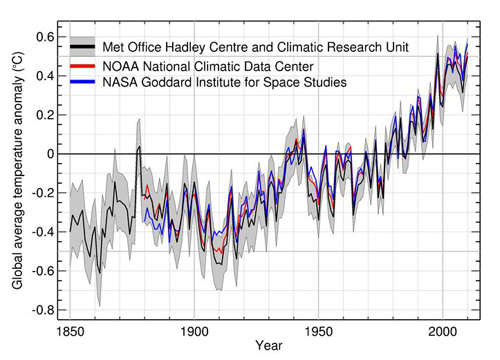This was originally produced as a contribution to Murrang Earth Sciences.
I remember back when I was an undergraduate being very excited at the idea of becoming a climatologist. I was so impressed with the power of the climate system.
The coming and going of the ice ages fascinated me. The vast ice sheets had such a huge impact on the land surface, carving out deep valleys and laying down fertile soil in their wake. Even the great rainforests were at the mercy of the climate system, expanding through the warm interglacial periods and then, inevitably, being driven back into their small refuges during the bitter ice ages.
At that stage, I believed that changes in the ice sheets, oceans and atmosphere governed nearly all these physical processes. The rainforests grew where climatic conditions permitted and the extent of our dry sclerophyll forests was also predetermined by the climate.
I eventually discovered my naivety. Of course our vegetation is equally impacted by land surface changes, with vegetation extent limited by soil type and nutrient availability. This is intuitive, although not to my eager and naïve young self!
I since learned that the land surface is intimately connected to the atmosphere. Indeed, our canonical understanding of the earth’s system views the land surface and atmosphere as complex interacting components of the climate, which interact with each other through feedbacks.
A famous meteorological example of the interconnectedness of these realms is the bunny fence experiment from Western Australia. Southwestern WA is a region of drastic land use change – estimates indicate up to 13 million hectares of native perennial vegetation has been cleared to make way for crops in a process described as “brutal”. Extensive land clearing also coincided with abrupt reductions in regional rainfall.
Here, a 750 km long fence erected for protecting crops from rabbits (the bunny fence) delineates undistributed, heterogeneous native vegetation on one side and comparatively uniform crops the other.
Climate model-based studies demonstrate that large-scale land cover changes in the area can explain the observed decline in rainfall: decreased surface roughness from shifting to crops resulted in changing moisture transport and dramatically reduced the likelihood of rainfall in the region.
This example typifies the strength, and importance, of land surface coupling to the atmosphere. However, the connectedness of the atmosphere and the land surface goes deeper, as conditions below the surface also have a large impact of the climate system on seasonal timescales.
The land surface is essentially the lower boundary of the atmosphere and there is an exchange of energy, water and chemical between the two realms at this boundary. Water in the subsurface, in particular, imparts an important control on the state of the atmosphere, both spatially and temporally.
Let’s take a look at the impact of soil conditions on air temperatures. If we imagine a region in which there is abundant soil moisture, then a large amount of energy from the sun will be will be used for evapo(transpo)ration of moisture, rather than simply heating the land surface. This is called the latent heat flux.
Conversely, if we imagine a dry region, where soil moisture is lacking, then no evaporation will take place, and the incoming energy from the sun will go straight towards heating the land surface directly. This is the sensible heat flux and leads to warmer surface air temperatures.
These processes are most important in regions that are neither too wet, nor too dry. In regions where soil moisture changes season-to season or year-to-year, the condition of the soil becomes important factor influencing temperature variability.
Australia is known to have a highly variable climate, but can this be related to soil moisture variability? The Bureau of Meteorology investigated this problem using a climate model and a suite of experiments that were driven by different soil moisture conditions. They determined that atmospheric variability in Australia is strongly linked to soil moisture, with variability in both temperature and rainfall connected to soil moisture conditions.
This relationship was strongest in summer and linked closely to changes in the El Nino-Southern Oscillation (ENSO), which is an important driver of year-to-year changes in climate in our region. A key outcome of this study was that having a good grasp on soil moisture conditions is imperative for being able to forecast seasonal climate conditions. It’s now clear that the land surface and atmosphere are strongly connected, with important feedbacks occurring between the two.
Our recent summer was the hottest ever recorded, with temperature records broken on daily right through to seasonal timescales. Conditions were so severe it was called the ‘angry summer.’
Our previous two hottest summers occurred in conjunction dry conditions associated with very strong El Niño events. But during our recent record hot summer, ENSO conditions were neutral, and occurred following two years of exceptionally heavy rainfall associated with an extended La Niña event.
I can’t help but think we dodged a bullet during our angry summer. The heat was certainly uncomfortable, but it can lead to far worse than discomfort in the bushfire prone, highly populated areas of eastern Australia. In these regions, extreme heat is often associated with catastrophic fire weather.
If the recent heat had occurred when soil conditions were different and, consequently those latent and sensible heat fluxes were altered, how bad could it have been?





